Choose Your Casting Method
Review These 7 Different Types of Casting Processes to Help You Select the Right Method for Your Project
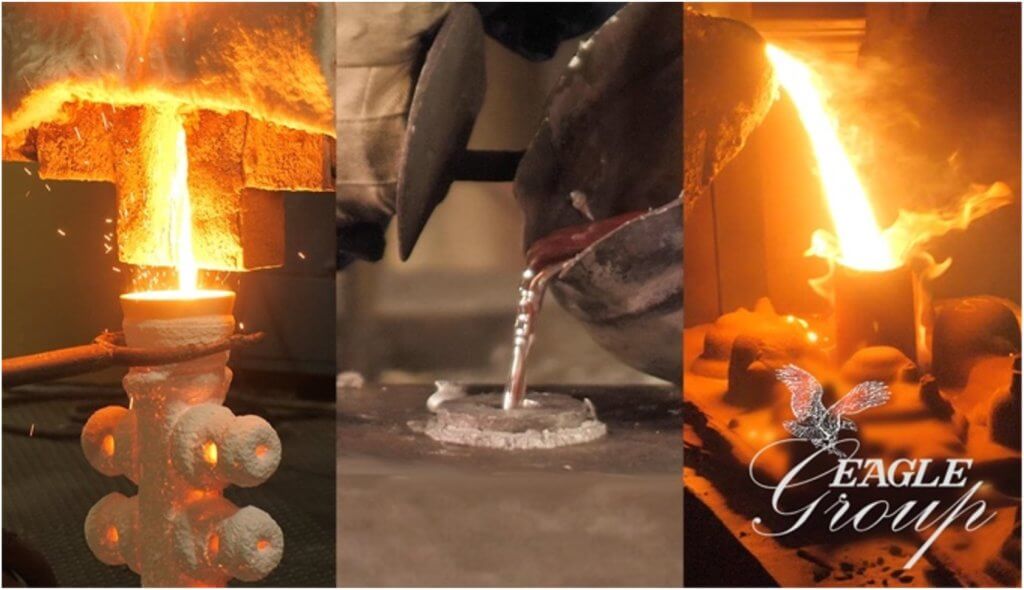 With many different types of casting processes available, choosing the right method for a part’s intended use is essential to ensure efficient, high-quality production.
With many different types of casting processes available, choosing the right method for a part’s intended use is essential to ensure efficient, high-quality production.
To select the optimal casting method for your manufacturing requirements, it’s helpful to understand the advantages and disadvantages of the different casting processes. Below, we outline some of the most common types of casting processes used today in manufacturing, along with their pros and cons and ideal part types. Each process utilizes unique tools and techniques and is optimized for different materials and part types. Our goal is to help you choose the metal casting process that best suits your project.
For more detailed information, click the links and articles on this page to get free resources that dive deeper into specific topics and the casting capabilities of the Eagle Group. If you have any questions, feel free to contact us to speak with one of our experts.
What is Casting?
Casting is a manufacturing process that involves pouring molten metal into a mold cavity shaped like the desired part. As the metal cools, it hardens into the final shape, often requiring minimal secondary processing before final delivery. Nearly any type of metal can be used for casting, and this versatility makes casting applicable across various industries.
How Do You Determine the Best Casting Process for Your Needs?
Various casting manufacturing processes can meet a wide range of demands, producing precise parts for diverse applications. Each casting method has unique strengths depending on the intended use of the cast part.
Types of Casting Processes
1. Shell Mold Casting
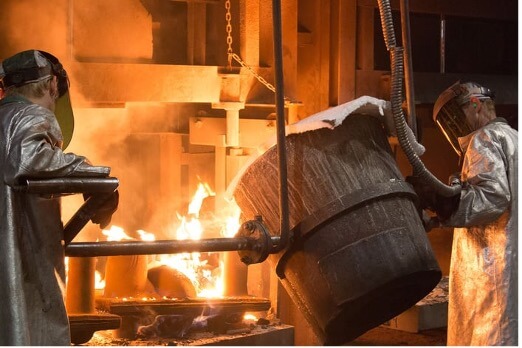 Shell mold casting, also called shell molding, is an expendable mold casting process. This process applies fine-grained, resin-coated sand to the surface of a pre-heated pattern, usually made of cast iron or steel. The resin melts when heat is applied, bonding the sand grains. This resin-coated, heat-bonded sand becomes the “shell” of the mold. The “shell” is lifted from the pattern in halves, which are glued together with the help of precise locating features to prevent shifting. At Eagle Alloy, we can achieve shell molding within tolerances of +/- .030” on dimensions 6” or less and a surface finish of approximately 200 – 250 RMS. Click here for a complete description of available tolerances, radii, fillets and other design considerations.
Shell mold casting, also called shell molding, is an expendable mold casting process. This process applies fine-grained, resin-coated sand to the surface of a pre-heated pattern, usually made of cast iron or steel. The resin melts when heat is applied, bonding the sand grains. This resin-coated, heat-bonded sand becomes the “shell” of the mold. The “shell” is lifted from the pattern in halves, which are glued together with the help of precise locating features to prevent shifting. At Eagle Alloy, we can achieve shell molding within tolerances of +/- .030” on dimensions 6” or less and a surface finish of approximately 200 – 250 RMS. Click here for a complete description of available tolerances, radii, fillets and other design considerations.
Advantages: casting of thin and complex parts; good casting detail; nice finish; excellent repeatability; very productive; less machine stock required than in greensand or no-bake processes; competitive pound-prices; very short production lead times
Disadvantages: tooling prices higher than some other processes; limitations on size and weight; not ideal for small scale production
Learn More About Shell Mold Casting:
- Eagle Group Shell Molding Process (ebook)
- Introduction to Shell Mold Casting (blog series)
- Animation of the Shell Molding Process (video)
- Shell Molding Tolerances, Capabilities and Design Recommendations at Eagle Alloy, Inc. (reference guide)
2. Investment Casting
Investment casting, also known as lost wax casting, involves injecting wax into a die to create a wax “pattern”. These wax patterns are then assembled onto a “tree,” which is repeatedly dipped in a ceramic slurry. Once dried, the slurry hardens into a mold. The wax is then melted out, the mold is preheated, and molten metal is poured in. The resulting casting has an excellent surface finish of around 125 RMS, crisp lettering and minimal machine stock. This process is perfect for highly visible parts or replacing machining with cast features. Tolerances can typically be held to +/- .005”. Eagle Precision Cast Parts uses this process exclusively.
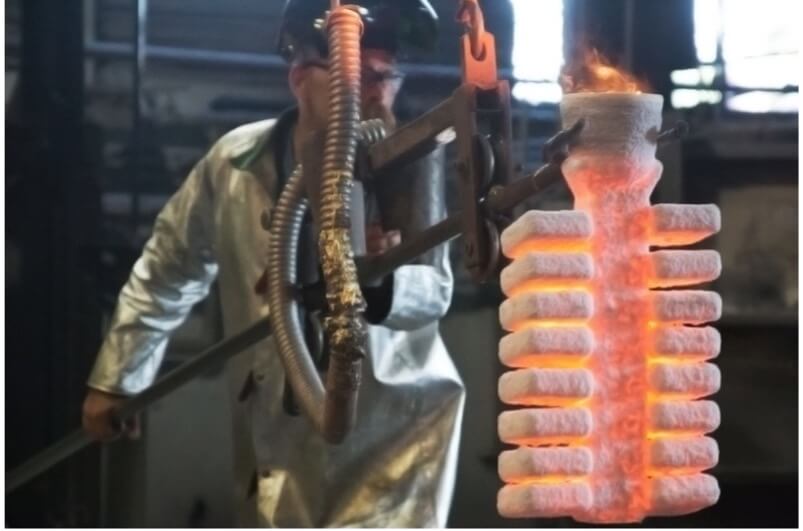 Advantages: excellent overall appearance; reduced or eliminated post-casting machining; ability to cast very thin walls; suitable for producing complex parts with high surface finishes; can cast hard-to-melt alloys (such as stainless steel); ideal for prototypes, economical tooling costs
Advantages: excellent overall appearance; reduced or eliminated post-casting machining; ability to cast very thin walls; suitable for producing complex parts with high surface finishes; can cast hard-to-melt alloys (such as stainless steel); ideal for prototypes, economical tooling costs
Disadvantages: higher pound-prices compared to sand casting; not ideal for high-volume runs
Learn More About Investment Casting:
- Introduction to Investment Casting (ebook)
- Investment Casting Capabilities at Eagle Precision Cast Parts, Inc. (reference guide)
- Investment Casting: From Clunky Fabrication to Sleek Casting (case study)
Sand casting is broad term for a versatile metalcasting technique that uses a mixture of sand, water and additives to create a mold. Sand casting techniques have relatively low tooling costs, as they involve creating a single-use mold cavity made from a tightly packed sand mixture. Among its methods, greensand casting and the airset method differ in mold preparation and composition, with each having its own benefits and being suited to different manufacturing needs.
3. Greensand Casting
Greensand casting is a specific type of sand casting, with variations of the technique tracing back to ancient cultures in China and Egypt. In this process moist, clay-bonded sand is compacted around a pattern to form a mold. The resulting molds are suitable to cast nearly any metal alloy, both ferrous or non-ferrous, and most of the sand used for molding can be reclaimed and recycled.
Advantages: allows casting of large and thin-walled parts; can work with nearly any ferrous or non-ferrous alloy; lower tooling costs compared to other processes; cost-effective for smaller runs; recycling
Disadvantages: lower degree of accuracy compared to other processes; yields products with a rough surface finish; not ideal to use for products with strict dimensional tolerances
Learn More About Greensand Casting:
- Introduction to Greensand Casting (blog post)
- Greensand Casting Tolerances, Capabilities and Design Recommendations (reference guide)
4. Airset Casting
Another variation of sand casting, airset casting–also known as no-bake casting–utilizes chemically bonded sand that solidifies at room temperature. Unlike greensand, which uses clay and water, airset casting allows for finer sand grains and more consistent results with fewer surface defects. Tooling is inexpensive and this process can produce parts with excellent dimensional accuracy and surface finish.
Advantages: tight dimensional tolerances; lower machining costs; suitable for casting a wide range of ferrous and non-ferrous metals; lower tooling costs compared to shell mold casting
Disadvantages: higher initial costs; preparing the molds can take more time compared to greensand casting; lower reusability of sand
Learn More About Airset Casting:
- Getting Started with Airset Casting (blog post)
- Airset Casting Capabilities at Eagle Alloy, Inc. (reference guide)
5. 3D Printed Mold Casting
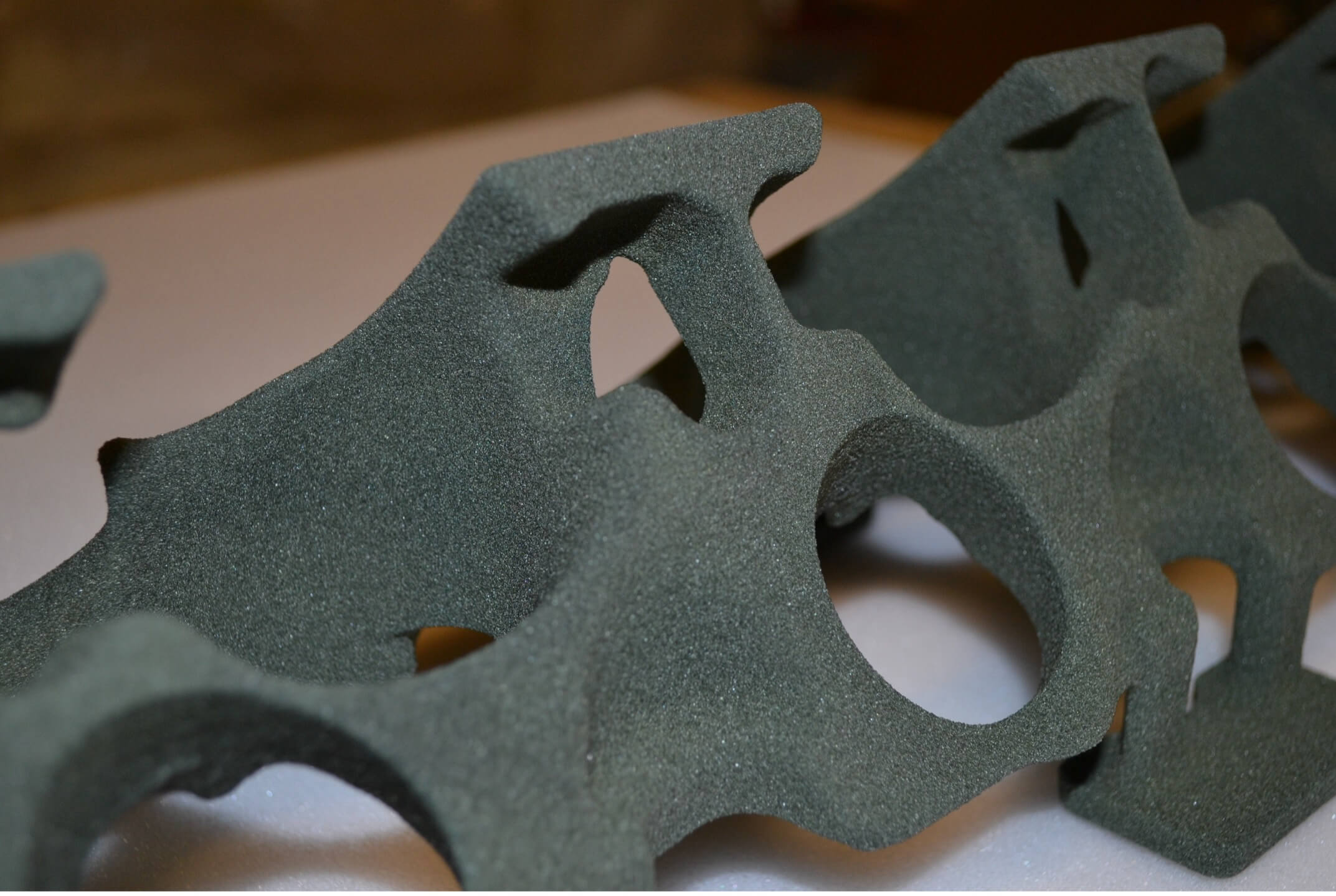 3D printed mold casting is an innovative process that blends 3D printing with traditional casting methods. The process starts with a digital 3D model of the part. Specialized machines then build molds and cores layer by layer, adding droplets of binder and depositing sand on top. Once the build is done, the mold is cleaned and sent to the foundry for assembly, pouring and finishing. Unlike conventional manufacturing, 3D printed molding requires no tooling, and can create intricate designs and prototypes with little to no scrap. However, this casting method is more time consuming than shell molding or investment casting and best suited for low-volume jobs. The Eagle Group uses 3D modeling software to design cast products and 3D models, partnering with Humtown Additive to manufacture high-quality 3D printed sand cores and molds.
3D printed mold casting is an innovative process that blends 3D printing with traditional casting methods. The process starts with a digital 3D model of the part. Specialized machines then build molds and cores layer by layer, adding droplets of binder and depositing sand on top. Once the build is done, the mold is cleaned and sent to the foundry for assembly, pouring and finishing. Unlike conventional manufacturing, 3D printed molding requires no tooling, and can create intricate designs and prototypes with little to no scrap. However, this casting method is more time consuming than shell molding or investment casting and best suited for low-volume jobs. The Eagle Group uses 3D modeling software to design cast products and 3D models, partnering with Humtown Additive to manufacture high-quality 3D printed sand cores and molds.
Advantages: a 3D model is all that’s needed to print parts, making design changes quick and easy; no tooling required; no assembly needed, reduces production complexity; shorter lead times than machined metal molds, reduces product development and prototyping cycle times
Disadvantages: the 3D printing process is time-consuming and best for low-volume jobs; not cost-effective for mass production; mold size is restricted by the build volume of the 3D printer; molds are limited to specific sand and binder combinations; final surface finish depends on the 3D printing technology, printer quality and build material used
Learn More About 3D Printed Mold Casting and 3D Modeling
- Designing Cast Products: 3D Modeling and Solidification Simulation Software (blog post)
- State-of-the-Art 3D Scanning for Cast Products (bog post)
- 3D Printed Sand Cores & Molds (Humtown Additive website)
Other Casting Methods
The Eagle Group specializes in shell mold, investment, greensand, airset and 3D printed mold casting. While we do not perform permanent mold or die casting, these are widely used industry-standard casting methods that may be the right choice depending on your part’s requirements.
6. Permanent Mold Casting
Permanent mold casting is named for its reusable mold cavity, typically made of steel or cast iron instead of sand or refractory materials. Tooling can be complicated to produce, and since the molds are made of metal, their melting points limit the types of alloys that can be used. Permanent mold casting is often used with aluminum or other non-ferrous alloys that have lower melting points. Permanent molding is ideal for high-volume production, where it achieves low per-part costs, but for low- or medium-volume runs, the high cost of tooling can be prohibitive. Typical tolerances for this process are +/- .010”.
Advantages: reusable mold so initial tooling costs can easily be recouped with high-volume runs; high dimensional accuracy if an accurately machined mold is used; high repeatability; little preparation needs to be made between castings
Disadvantages: “permanent” molds don’t last forever and may need to be replaced midway through a large run; inflexible molds can lead to defects if castings are not removed promptly; limited options in terms of alloys cast
Learn More About Permanent Mold Casting:
- Getting Started with Permanent Mold Casting (blog post)
- Permanent Mold Cast Aluminum Fan Blades (case study)
- Permanent Mold Casting Tolerances, Capabilities and Design Recommendations (reference guide)
7. Die Casting
Die casting, similar to permanent mold casting, utilizes reusable steel molds and is a popular choice for non-ferrous alloys with relatively low melting points, like aluminum and zinc. The process involves injecting molten metal into the mold cavity at high pressure and speed to fill the mold cavity quickly and completely. Die casting can provide excellent casting parameters, but its high startup costs generally make it suitable for large-volume production runs.
Advantages: repeatability; high dimensional accuracy; ideal use for high-volume runs
Disadvantages: setup costs can be expensive; molds may need to be replaced midway through a large run; inflexible molds can lead to defects if castings are not removed promptly; limited options in terms of alloys cast
Learn More About Die Casting:
- What Is the Die Casting Process? (video)
CNC Machining
CNC machining is the final step in nearly any manufacturing process, and casting is no exception. Different metalcasting methods like those described above are ideal for different applications, and CNC machining is often the final finishing process in due to its high accuracy and precision.
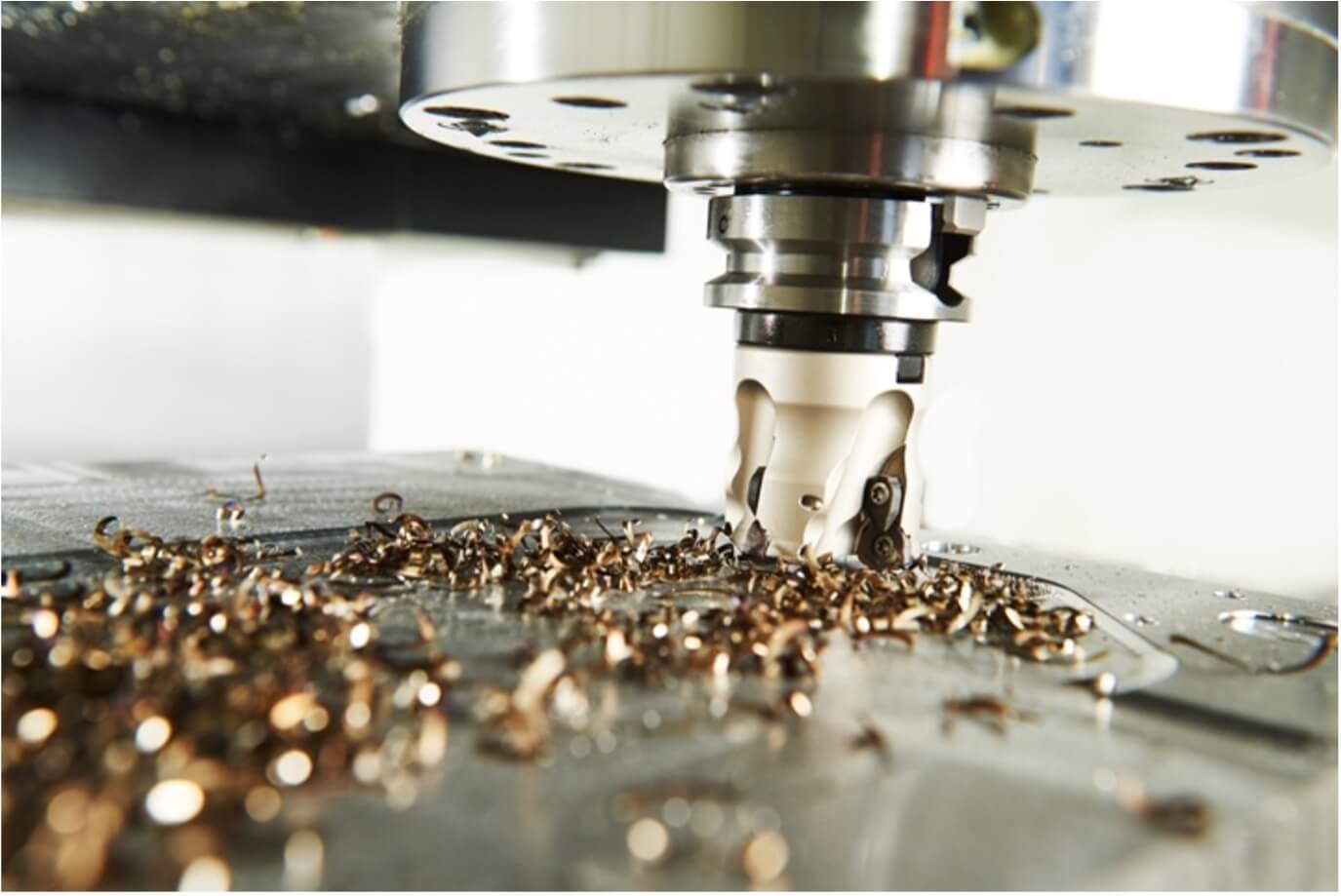 Eagle CNC Technologies uses highly sophisticated machining equipment and has extensive experience machining all types of casting and wrought materials. Our advanced milling and turning equipment can achieve tolerances within one ten thousandth of an inch (.0001”). Eagle CNC provides bespoke machining plans for Eagle Group foundries as well as a variety of job shops and OEM companies.
Eagle CNC Technologies uses highly sophisticated machining equipment and has extensive experience machining all types of casting and wrought materials. Our advanced milling and turning equipment can achieve tolerances within one ten thousandth of an inch (.0001”). Eagle CNC provides bespoke machining plans for Eagle Group foundries as well as a variety of job shops and OEM companies.
Advantages: high production scalability; extremely smooth surface finishes and high precision; time-efficient
Disadvantages: not well-suited for parts with highly organic or irregular shapes; size limitations; can be costly to machine complete from stock
Learn More About Eagle CNC’s Machining Capabilities:
- CNC Machining Tolerances, Capabilities and Equipment List at Eagle CNC Technologies, Inc. (reference guide)
The Eagle Group: Your Partner from Concept to Completion
At the Eagle Group, we offer a full suite of casting and machining solutions, ensuring that your project receives the attention and expertise it deserves every step of the way. Our team includes Eagle Alloy, Eagle Precision Cast Parts and Eagle CNC. Each company specializes in specific processes, allowing you to get what you need all from one source.
Whether you require intricate investment castings or large-scale sand castings, our team is committed to bringing your ideas to life with precision and efficiency. Contact us today to discuss your next machining project and discover how we can be your partner from concept to completion.


